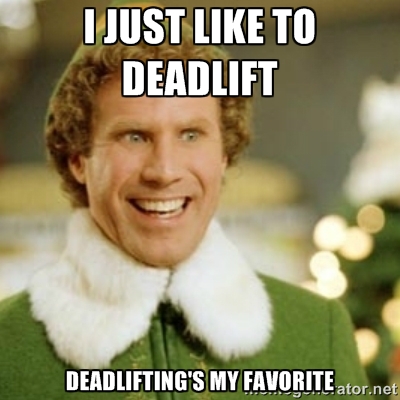Why the Deadlift is More Than Just Picking Up Heavy Things
2024-10-12
Training often mirrors life in many ways. One of the most valuable lessons, both in and out of the gym, is that the things we avoid are often the ones we need the most. It’s not because they’re too hard or we’re lazy—it’s usually because we’re just not good at them yet. That’s why at DVRT, we focus not on what’s easy, but on what’s most productive. And there’s no better example of this than how we approach the deadlift.
The Simple Power of the Deadlift
Let’s be honest: deadlifting is straightforward. Pick up something heavy, and you’ll feel strong. It’s a simple concept anyone can grasp, and trust me, it works. From personal experience, I’ve seen everyday people achieve impressive deadlifts without obsessing over it. Men pulling 400 pounds, women lifting between 185 and 225—all while training just a few times a week. There’s something undeniably satisfying about the raw strength of a deadlift. I loved it.

As someone who’s battled a bad lower back since I was 14, the fact that I could lift nearly 600 pounds felt like a victory. It made me feel invincible—until I met the deadlift’s humbling cousin: the single-leg deadlift.

Enter the Single-Leg Deadlift: The One You Avoid But Need the Most
The single-leg deadlift was a different story. Despite my big deadlift numbers, this variation frustrated me to no end. I couldn’t hide my weaknesses. Old basketball injuries had wrecked my ankles, exposing imbalances in my lower leg and foot. And suddenly, my lack of core and pelvic stability—issues masked by a standard deadlift—were painfully clear.
It was a rude awakening. The deadlift I needed to be doing was the one I had dismissed as just a “balance exercise.” In reality, it wasn’t my balance that was the problem; it was everything else I had been ignoring.
Sound familiar?
Why Coaches (and Clients) Struggle With the Single-Leg Deadlift
If you’re a coach, you’ve probably had similar experiences. You know the single-leg deadlift is valuable, but it’s hard to get people to succeed at it. That’s where DVRT steps in. We’re all about finding solutions that help people progress, and the single-leg deadlift is no exception.
People think of deadlifting as heavy lifting, and sure, load is important. But load isn’t the only variable that matters. At DVRT, we focus on three key concepts to help you master the single-leg deadlift and many other movements:
- Load Position
- Body Position
- Plane of Motion
When combined with heavier loads, these concepts allow you to progress in ways that go beyond just “picking up more weight.” They unlock almost limitless movement variations, which means more opportunities for growth.
View this post on Instagram
Physical Therapist, Jessica Bento, shows how many options we have to really progress our single leg deadlift training and this isn’t close to all of them!
Building Success in the Single-Leg Deadlift
People often feel overwhelmed by all the options DVRT offers, but it’s really simple. Let’s break it down into four steps for progressing the single-leg deadlift:
- Add more load – Yes, you can go heavy, but be strategic.
- Adjust the load position – Changing how the weight is distributed makes a huge difference.
- Refine your body position – How you position your body affects balance, strength, and control.
- Change the plane of motion – Don’t just move up and down; explore different angles.
By mastering these elements, you can take your deadlift (and overall fitness) to a whole new level. Coach Shannon from Fitness Lying Down shows how we employ these concepts along with our Core Strap to transform transform your single-leg deadlift. For example, adding a band around the ankle keeps the foot engaged, forcing your body to stabilize in ways you wouldn’t experience with a conventional deadlift.
View this post on Instagram
Why Embracing the Hard Stuff Leads to Greater Results
The real magic happens when you step outside your comfort zone and tackle what you’re not naturally good at. When you see how these movements improve not only your strength but also your balance, coordination, and stability, training becomes more exciting. It stops being about doing more exercises and starts being about doing better exercises.
Ultimately, the goal is to expand your training toolkit—not just with more tools, but with the right tools. That’s where the single-leg deadlift, along with the principles of DVRT, shines. It’s not just about getting stronger; it’s about becoming more functional, more capable, and more resilient in both your workouts and your daily life.
So, next time you hit the gym, don’t shy away from the exercises that challenge you the most. That’s where the real progress—and fun—begins.
Learn much more how we progress even familiar exercises so much more successfully with our DVRT, Progressive Kettlebell, & LIFT programs that are 40% off with code “flash” HERE
View this post on Instagram
© 2026 Ultimate Sandbag Training. Site by Jennifer Web Design.







